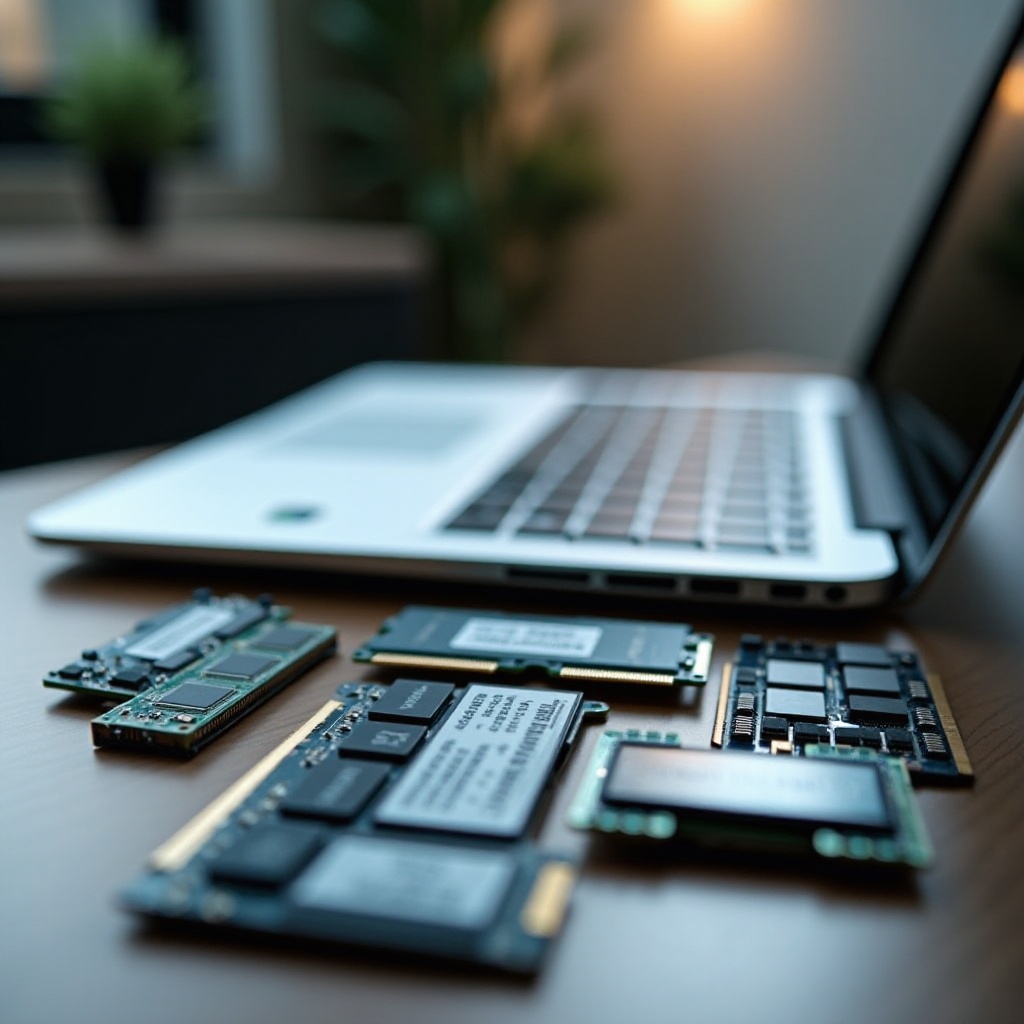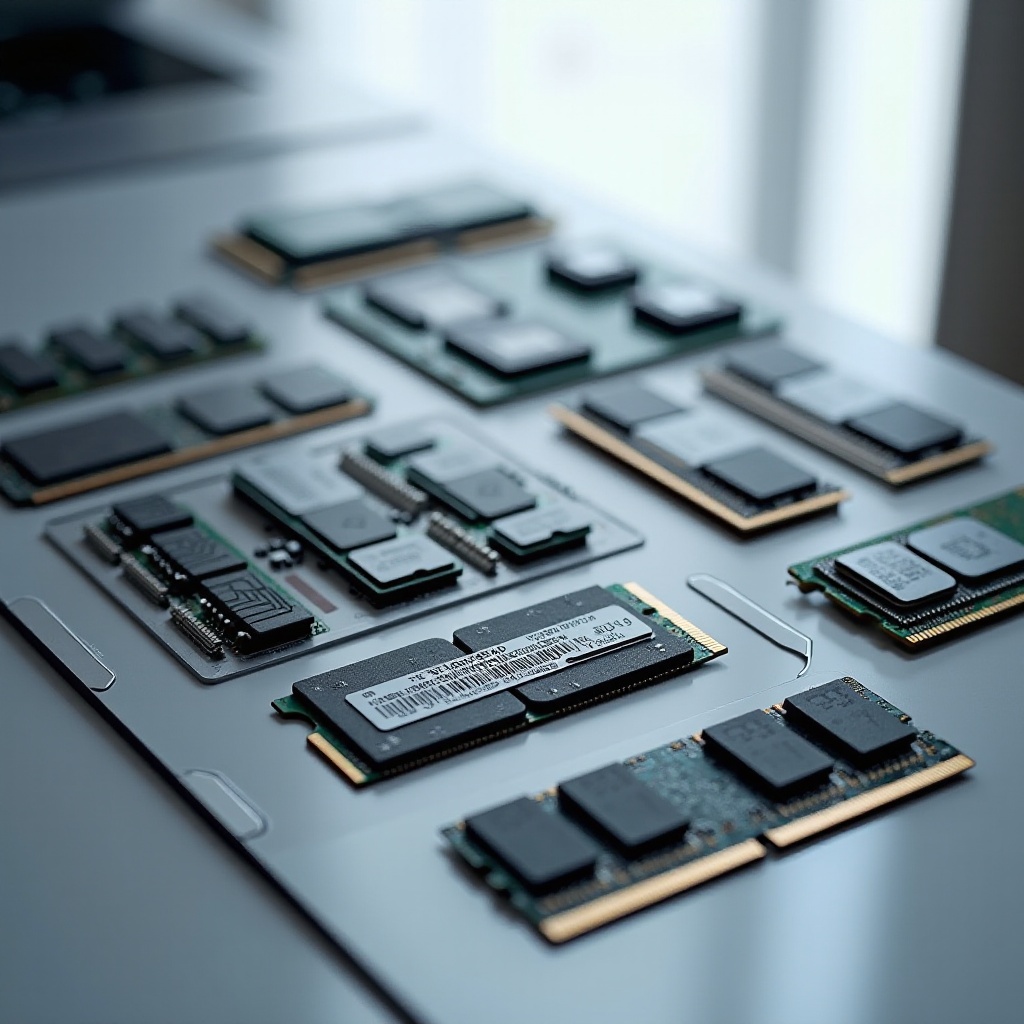Introduction
Choosing the right notebook memory can boost your laptop’s performance significantly. Whether you’re gaming, working, or handling daily tasks, understanding notebook memory types is crucial for making informed decisions. Each memory type offers a unique set of specifications designed to cater to diverse user requirements. This guide will explore various notebook memory types, highlight key features, and explain how to select the right fit for your personal and professional needs.

Overview of Notebook Memory Types
Understanding different notebook memory types is essential for maximizing your device’s capabilities. Not every memory type is suitable for every user, and making the appropriate choice depends on your specific use case and performance expectations.
DDR3 and Its Decline
DDR3 memory once dominated the laptop market due to its cost-effectiveness and satisfactory performance for basic tasks. However, as demands for faster processing speeds grew, DDR3 gradually became outdated. Most contemporary laptops now favor more advanced memory types.
DDR4: The Current Standard
DDR4 memory has become the standard for today’s laptops, offering enhanced speeds, increased bandwidth, and improved power efficiency compared to its predecessor, DDR3. For users seeking better performance, DDR4 provides a balance between cost and capability, making it a popular choice in new laptops.
DDR5: The Future of Notebook Memory
DDR5 is set to revolutionize the way we think about laptop memory. With its potential for higher speeds and superior performance, DDR5 is perfect for handling complex tasks. Tech-savvy users and professionals performing high-intensity computing work eagerly anticipate this next generation of memory, though it is gradually making its appearance in select flagship models.

Key Features of Different Memory Types
Decoding the key features of memory types can drive more informed choices. Understanding these attributes will help you decide what suits your laptop and computing style best.
Memory Size Options and Recommendations
- 4GB: Adequate for basic activities like web browsing and office productivity.
- 8GB: Suitable for multitasking and running standard applications simultaneously.
- 16GB+: Essential for gaming, video production, and complex multitasking.
Selecting the right memory size depends on your particular needs. Consider what applications you use regularly and how future-proof you wish your laptop to be.
Understanding Memory Speed and Its Significance
Memory speed, often measured in MHz, affects data processing times and contributes to the overall smoothness of operations. Faster memory speeds mean seamless application usage and reduced lag. Users looking to enhance multitasking capabilities should prioritize higher speed ratings.
ECC vs. Non-ECC Memory
ECC memory is designed to find and correct data corruption, commonly used in servers and critical applications requiring utmost reliability. Conversely, non-ECC memory is typical for consumer laptops, balancing performance with cost efficiency for daily use.
How to Choose the Right Memory for Your Laptop
Selecting the suitable memory type requires understanding how different factors affect performance. You should consider your specific needs and how you’ll be using your laptop now and in the future.
Factors Influencing Memory Choice
Key factors to consider include:
– Compatibility: Confirm memory compatibility with your laptop model.
– Power Consumption: Opt for energy-efficient memory to extend battery life.
– Future-proofing: Select a size and type suitable for future applications.
Specific Use Cases: Gaming, Business, and Everyday Computing
- Gaming: Requires high-speed memory for smooth gameplay and processing vast amounts of data quickly.
- Business: Balances performance and cost, excelling with moderate memory size for applications.
- Everyday Computing: Functions sufficiently with lower-end memory sizes for less demanding activities.
Budget Considerations
Budget is often a determining factor when choosing memory. Prices fluctuate based on size and type, so it’s crucial to allocate funding that reflects your needs and plans for future upgrades. Watching for sales can also reduce expenditures.
Upgrading Your Notebook’s Memory: A Step-by-Step Guide
Upgrading your notebook’s memory can breathe new life into an older device or enhance the performance of a new one. The process is surprisingly straightforward for most users.
Checking Compatibility and Requirements
- Reference your laptop’s manual or manufacturer’s site for specific memory details.
- Determine the current memory configuration and the maximum supported.
- Identify slots availability — do you need to replace or supplement existing memory?
Tools Needed for Memory Upgrade
- Basic screwdriver set
- Anti-static wrist strap or mat
- New memory modules
Installation Process
- Power off and unplug your laptop.
- Open the back panel to locate memory slots.
- If replacing, gently release old memory.
- Firmly insert new memory in the correct orientation.
- Close up your laptop and reboot to ensure the memory is recognized.

Conclusion
Understanding notebook memory types and their attributes is pivotal for informed decision-making. Recognize the current standard and anticipate future advancements by selecting a memory type that meets today’s needs and sets you up for tomorrow’s demands. By choosing and, if needed, upgrading your laptop’s memory wisely, you can significantly enhance its performance and lifespan.
Frequently Asked Questions
How do I know which memory type is compatible with my laptop?
Consult your laptop’s manual or manufacturer’s website for specific memory specs. Online tools from memory manufacturers can also help identify compatible modules.
Is it worth upgrading my laptop’s memory?
Yes, especially if your laptop struggles with multitasking or high-demand applications. Assess the cost against the performance boost you need.
How much RAM do I need for gaming vs. productivity tasks?
Gamers should have at least 16GB for optimal performance, while 8GB will suffice for productivity applications and regular multitasking.
